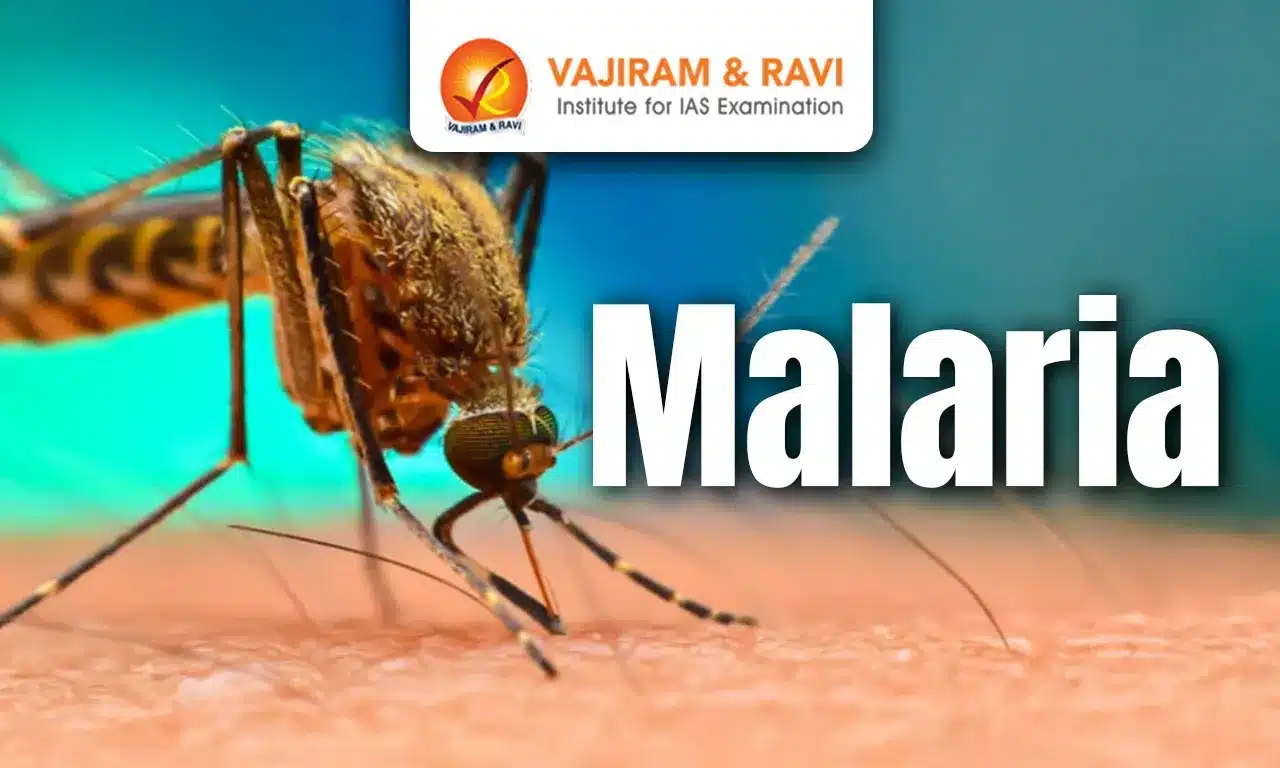Malaria Latest News
World Malaria Day is observed every year on April 25, as endorsed by WHO member states in 2007.
- The theme for 2025 is “Malaria Ends With Us: Reinvest, Reimagine, Reignite”, which urges renewed global action against malaria through innovation, collaboration, and sustained commitment.
About Malaria
- Malaria is a life-threatening febrile illness caused by Plasmodium parasites, transmitted through the bites of infected female Anopheles mosquitoes.
- The disease is not contagious, but can be spread through infected blood or contaminated needles.
- The most dangerous species are Plasmodium falciparum and Plasmodium vivax.
Symptoms and Risks
- Symptoms appear 10–15 days after infection and include fever, chills, and headache.
- Severe symptoms can include seizures, difficulty breathing, jaundice, dark urine, and death if untreated.
- Partial immunity can develop in endemic regions, making diagnosis difficult in some patients.
Prevention and Treatment
- Prevention includes vector control, use of mosquito nets, repellents (DEET, IR3535, Icaridin), long clothing, and chemoprophylaxis for travellers.
- Early diagnosis and treatment using microscopy or rapid diagnostic tests (RDTs) are critical.
- Treatments include:
- ACTs (Artemisinin-based Combination Therapies) for P. falciparum.
- Chloroquine for P. vivax where effective.
- Primaquine to prevent relapses in P. vivax and P. ovale infections.
- Severe malaria cases require injectable treatments in clinical settings.
Malaria FAQs
Q1. What causes malaria?
Ans. Malaria is caused by Plasmodium parasites, transmitted through the bite of infected female Anopheles mosquitoes.
Q2. Which Plasmodium species is the deadliest?
Ans. Plasmodium falciparum is the most severe and deadly species causing malaria.
Source: PIB
Last updated on November, 2025
→ Check out the latest UPSC Syllabus 2026 here.
→ Join Vajiram & Ravi’s Interview Guidance Programme for expert help to crack your final UPSC stage.
→ UPSC Mains Result 2025 is now out.
→ UPSC Notification 2026 is scheduled to be released on January 14, 2026.
→ UPSC Calendar 2026 is released on 15th May, 2025.
→ The UPSC Vacancy 2025 were released 1129, out of which 979 were for UPSC CSE and remaining 150 are for UPSC IFoS.
→ UPSC Prelims 2026 will be conducted on 24th May, 2026 & UPSC Mains 2026 will be conducted on 21st August 2026.
→ The UPSC Selection Process is of 3 stages-Prelims, Mains and Interview.
→ UPSC Result 2024 is released with latest UPSC Marksheet 2024. Check Now!
→ UPSC Prelims Result 2025 is out now for the CSE held on 25 May 2025.
→ UPSC Toppers List 2024 is released now. Shakti Dubey is UPSC AIR 1 2024 Topper.
→ UPSC Prelims Question Paper 2025 and Unofficial Prelims Answer Key 2025 are available now.
→ UPSC Mains Question Paper 2025 is out for Essay, GS 1, 2, 3 & GS 4.
→ UPSC Mains Indian Language Question Paper 2025 is now out.
→ UPSC Mains Optional Question Paper 2025 is now out.
→ Also check Best IAS Coaching in Delhi
Tags: malaria prelims pointers upsc current affairs upsc prelims current affairs

















